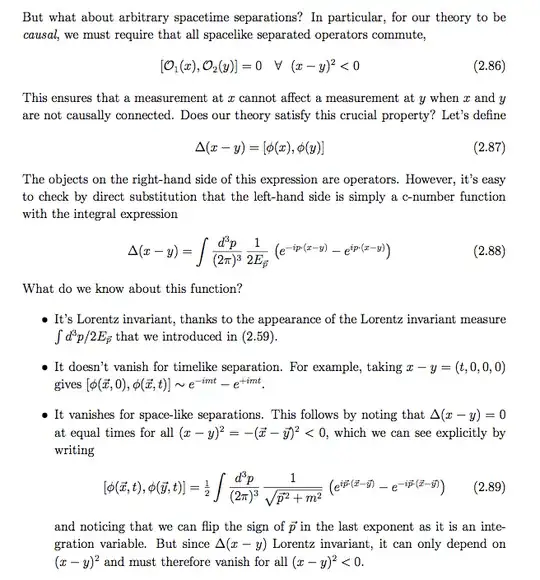This is a screen shot of one page in David Tong's QFT notes.
To clarify some of the notations, $p$ means the 4-vector momentum, while $\vec{p}$ denotes the 3-momentum, and similarly for $x$ and $\vec{x}$.
I have two questions:
In my understanding, causality forbids the propagation of a particle from one point to another that is spacelike separated, that is to say, the two point function has to vanish for spacelike intervals. Is this requirement equivalent to the equation (2.86) in the image that operators commute?
How is the integral in equation (2.89) zero? I couldn't get to understand David's arguments.
